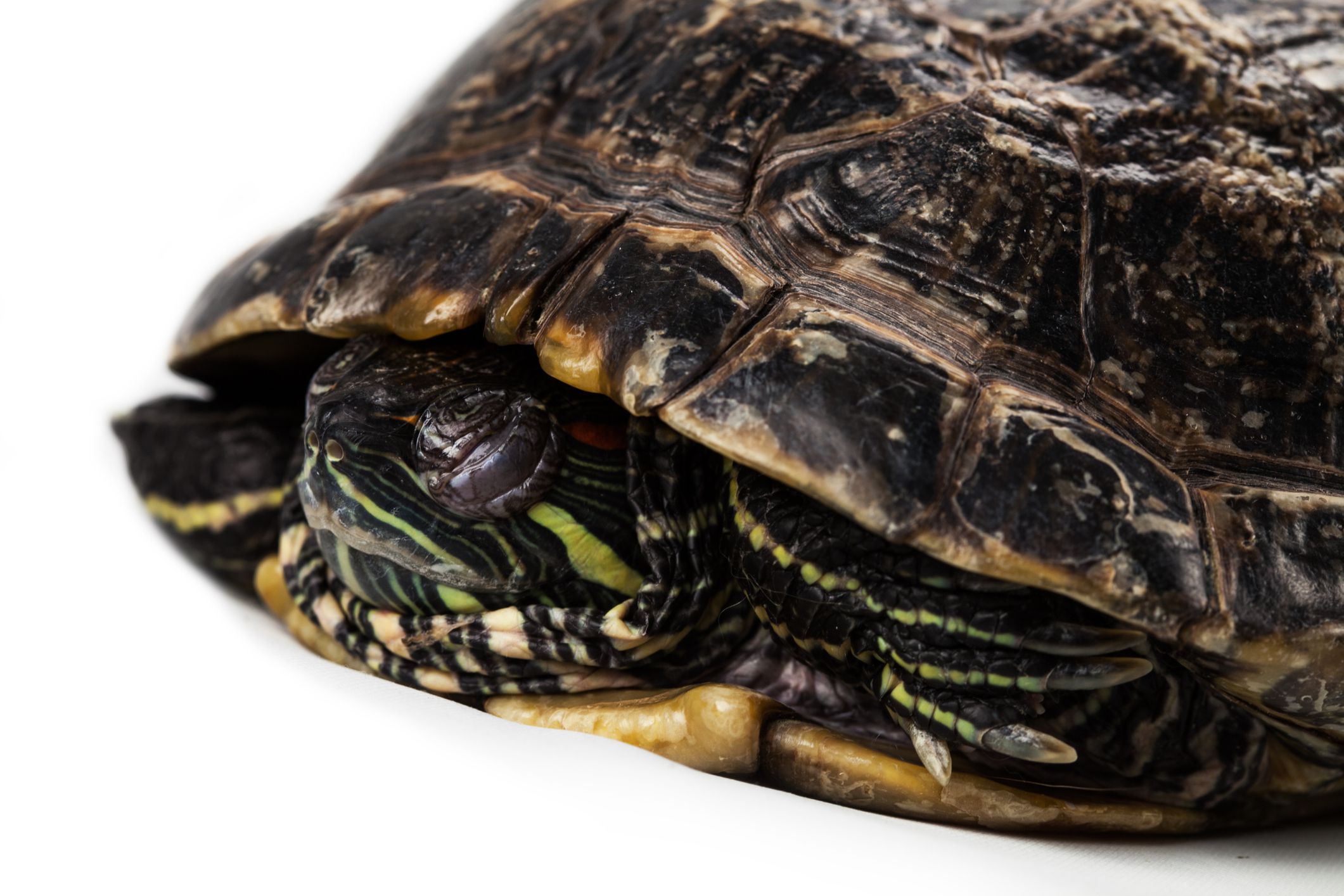Red-eared slider turtles sleep underwater, usually resting on the bottom or floating near the surface. They can also sleep on land, basking in the sun or hiding in their shelters.
Red-eared slider turtles are semi-aquatic reptiles known for their distinctive red patches on the sides of their heads. These turtles are commonly kept as pets due to their charming appearance and relatively low maintenance. Understanding their sleeping habits is essential for providing proper care, as it helps maintain their overall health and well-being.
Whether you’re a pet owner or simply curious about these fascinating creatures, learning about how red-eared slider turtles sleep can offer valuable insights into their natural behaviors and requirements. We’ll explore the sleeping patterns and preferences of red-eared slider turtles, shedding light on their unique habits and needs.
Credit: www.quora.com
Red Eared Slider Turtles
Red Eared Slider Turtles are popular reptiles known for their distinctive red stripes on the sides of their heads. They are aquatic turtles native to North America.
Physical Characteristics
Red Eared Slider Turtles have smooth, oval-shaped shells that are typically dark green with yellow stripes. They have webbed feet and their skin is olive to dark green in color.
Habitat
Red Eared Slider Turtles are commonly found in freshwater environments such as ponds, lakes, and slow-moving streams. They prefer basking on rocks or logs near the water’s edge.

Credit: dwazoo.com
Sleep Patterns
Red Eared Slider Turtles, like many other animals, have unique sleep patterns that are fascinating to observe. Understanding their sleep habits can provide valuable insights into their natural behavior and overall well-being. Let’s delve into the sleep patterns of these intriguing reptiles.
Diurnal Vs. Nocturnal
Red Eared Slider Turtles are diurnal creatures, meaning they are most active during the day. Their sleep pattern generally involves basking in the sun and resting on land or in the water during the night. Unlike nocturnal animals that are active at night, these turtles prefer to be active during daylight hours.
Sleep Duration
Red Eared Slider Turtles typically require 12 to 14 hours of sleep per day. This sleep duration is essential for their physical and mental well-being. Adequate rest allows them to recharge their energy levels and maintain a healthy immune system, contributing to their overall longevity and vitality.
Sleeping Environment
When it comes to the sleeping environment of red-eared slider turtles, it is essential to understand their unique needs and preferences. Providing an appropriate sleeping environment is crucial for the overall well-being of these fascinating aquatic creatures.
Aquatic Vs. Land Sleeping
Red-eared slider turtles are semi-aquatic, meaning they spend time both in water and on land. When it comes to sleeping, they exhibit different behaviors based on their environment. In aquatic sleeping, these turtles often rest at the bottom of the water, with their limbs extended to conserve energy. On land, they may seek out a secluded area with suitable warmth and shelter to rest and sleep peacefully.
Temperature And Lighting
Temperature and lighting play a vital role in the sleeping environment of red-eared slider turtles. Maintaining the water temperature within the ideal range of 75-85°F is crucial for their aquatic sleeping habits. Adequate basking spots with UVB lighting are essential for land sleeping, as it helps regulate their metabolism and overall health. Providing a 12-hour light and dark cycle mimicking natural conditions is beneficial for their sleep-wake patterns.

Credit: www.youtube.com
Sleeping Positions
Red-eared slider turtles sleep submerged underwater, often resting on the bottom of their habitat or floating near the surface. They may also tuck their legs and head into their shell while sleeping, assuming a relaxed position. These sleeping positions help them regulate body temperature and protect themselves from predators.
Sleeping Positions are crucial for the well-being of red-eared slider turtles. They exhibit various positions while sleeping, including Floating, Burrowing, and Basking.Floating
Red-eared slider turtles often sleep while floating on the surface of the water. They position themselves with limbs extended and head tucked in, resembling a peaceful floating posture.Burrowing
Sometimes, these turtles prefer to sleep by burrowing themselves under sand or gravel at the bottom of their habitat. This behavior mimics their natural instinct to seek shelter and security while resting.Basking
Another common sleeping position for red-eared slider turtles is basking. They may rest on a basking platform or a rock, with their limbs stretched out, absorbing warmth from a heat source. In summary, red-eared slider turtles exhibit distinct sleeping positions such as Floating, Burrowing, and Basking, each serving a specific purpose in their natural behavior.Sleeping Disorders
Sleep Deprivation
Red-eared slider turtles can experience sleep deprivation due to disruptions in their environment.
Respiratory Distress Syndrome
This syndrome can affect a turtle’s breathing patterns during sleep, leading to health issues.
Conclusion
In the wild or as pets, red-eared slider turtles sleep underwater or basking on land. Understanding their sleep habits is crucial for their well-being. By providing the right environment and ensuring they feel secure, you can help your red-eared slider turtle get the rest it needs to thrive.






Leave a Reply